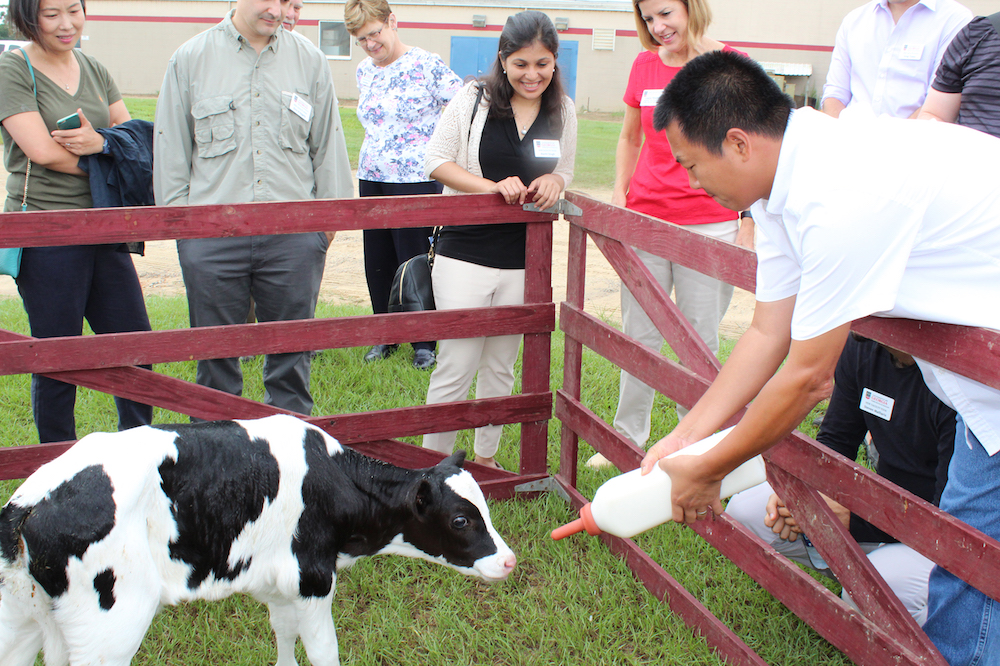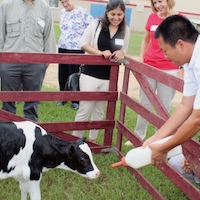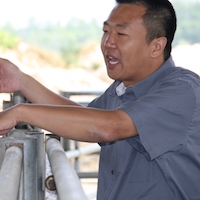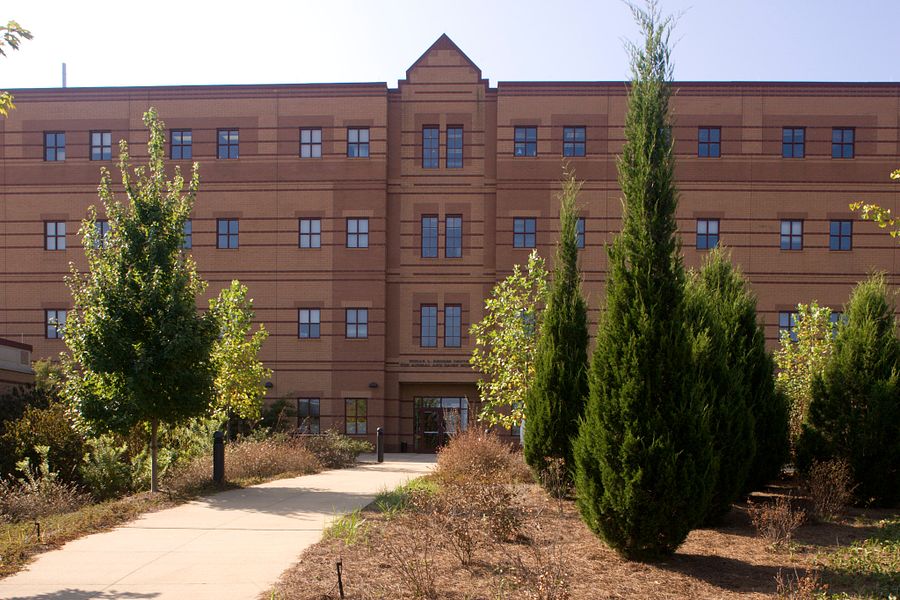When Sha Tao joined the University of Georgia’s Department of Animal and Dairy Science in 2014 to study heat stress nutrition, management and physiology in dairy cattle, Georgia’s dairy producers welcomed the new expert in heat stress physiology.
Five years after joining the UGA College of Agricultural and Environmental Sciences, Tao is seeing the impact of the research he’s conducting on the UGA Tifton campus.
Research that’s emerged from Tao’s lab helps elucidate the potential impact of heat stress on the development and function of the bovine mammary gland and facilitates the understanding of differences in metabolic and physiological responses and growth performance of dairy calves raised during hot, humid summers and the temperate winter environment in south Georgia.
Heat stress is inevitable in the Southeast, and Tifton’s location in south Georgia provides prime real estate to conduct heat stress research. June, July and August are routinely hot months in Georgia and, this past May, temperatures have already reached 100 degrees Fahrenheit.
What makes Tao’s job so essential for dairy producers are the negative effects heat stress can have on dairy cows’ ability to get pregnant and produce milk, as well as increasing susceptibility to disease.
“Heat stress is a major issue in the dairy industry. Because it is caused by high temperatures and high humidity, it will lead to several physiological adjustments of the cows. You’ll have increased body temperature, increased respiration rate,” Tao said. “If we can understand how heat stress influences a cow and calf metabolically and physiologically, we can develop some additional management strategies or nutritional pharmaceutical interventions to reduce the impact. We can’t 100% mitigate the impact of heat stress but we can develop information that will better aid dairy cattlemen.”
Milk production is of utmost concern, according to Tao. Reduced milk production caused by heat stress in the U.S. leads to a $2 billion annual loss, he said.
Dairy producers already use management strategies to help dairy cattle stay cool during the summer. Fans, misters and soakers are used to cool off cattle at dairy operations across the Southeast, including the research farm Tao uses for his research at UGA-Tifton.
“In our dairies here in the Southeast, for example in Florida and Georgia, we face the most severe heat stress issues, and that’s because we have longer summers and more humidity. That causes problems,” Tao said.
When cows are exposed to a temperature-humidity index above 68, their milk production level begins to decrease, Tao said.
Seventy-five percent of Tao’s time is spent conducting research and 25% is spent focused on Extension, sharing his findings with cattlemen.
“We still feel there’s plenty of information to gather about heat stress,” Tao said. “Without this knowledge, we have difficulty developing further information to distribute to producers about heat stress.”
Georgia’s dairy industry has been successful despite the state’s warm climate. According to the UGA Center for Agribusiness and Economic Development, dairy generated $323.8 million in farm gate value in 2017, accounting for 22.6% of the livestock/aquaculture sector in Georgia.









